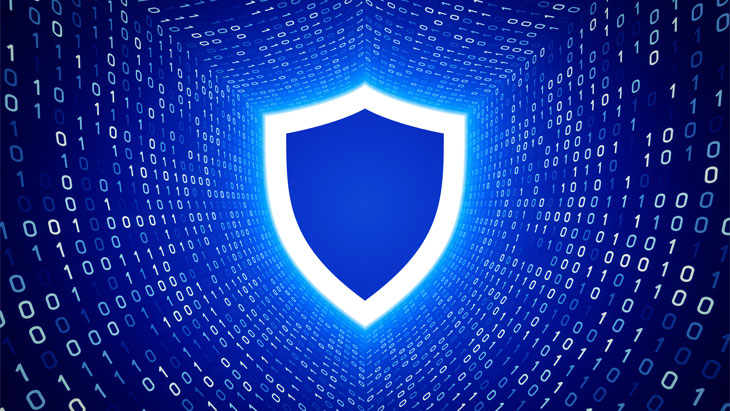
Securing Third-Party Access
Today, companies are moving a significant part of their work online and, for all stakeholders involved, it is as much risky as it is advantageous. The cybersecurity architecture of your organization plays an important role in avoiding the potential damages brought about by a number of risks. Indeed, considering that a cybersecurity architecture is as strong as its weakest component, there arises a significant question: Is there a component in my IT system that is not completely under my control?
The most frequent answer to this question is third-party access by partners or suppliers. Companies may grant third-party access to partners or suppliers for the workflow to run smoothly. If you do not have a sufficiently advanced cybersecurity architecture, it is not possible to effectively monitor the use of this permission. Individuals or organizations with third-party access may be more flexible in terms of access security and privileged account management in comparison to another stakeholder in the network.
This flexibility may expand the attack surface of your organization and render your IT architecture more vulnerable to many different types of cyber threats. Here, companies need to regard the individuals and organizations to which they grant third-party access as their own employees and ensure they fulfill the requirements of the principle of least privilege. This will make it considerably easier to maintain the efficiency of the control mechanism.
What is Third-Party Access?
Third-party access is when external users are able to connect to the company's IT architecture via a defined network. The most important issue regarding third-party access security is the ability to effectively monitor external users' activities. Privileged access given to external users to ensure that workflow continues smoothly carries the risk of abuse.
The identification of external users as third-party privileged accounts in the IT architecture often renders it more vulnerable against cyber attackers. In addition, this privileged access can be abused by the external users themselves as well. Lack of adequate supervision of external users' access is among the main reasons why hackers attempt to breach data security through third-party access.
The third-party access that is actually granted to smooth out the workflow may result in the exposure of sensitive data. The research carried out by Wiz also clearly reveals how third-party access may lead to data breaches.
The results of the research show that 82% of organizations grant privileged access permissions to external users. In addition, 76% of organizations also grant the privilege of full account takeover to external users that have third-party access. Finally, the Wiz research revealed that 90% of cloud computing security teams are not aware of the extent of the permissions they grant to external users.
The prevalence of third-party access brings with it various issues related to the security of third-party access. Among these problems are issues regarding remote access management, in addition to ensuring the access security of applications and devices.
Monitor and Verify Third-Party Access
Potential problems related to third-party access should not prevent you from working with external users. On the contrary, it is possible to ensure access security by putting in place the right control mechanisms that offer the possibility of 24/7 monitoring.
In doing so, you must strictly monitor third-party access and commission a multi-step verification process. You can apply the six basic steps below, which you can follow while building the respective security process, to prevent your IT architecture from beeing threatened due to access permissions granted to external users:
- The first step should be to separate third-party credentials from company credentials. You can utilize Privileged Access Management (PAM) solutions to enable external users to log in to the system without interacting with the company credentials in the network. Moreover, with PAM, you may choose not to assign any log in credentials to third parties.
- The second step is related to VPN access. As VPN access does not provide adequate third-party access security, the sensitive data you hold may be breached. VPNs may be vulnerable against lateral movements, which may lead to problems in the IT architecture rooted in access by external users.
- The means of granting access is also of great importance in terms of the security of third-party access. You should adopt the principle of Zero Trust so that external users cannot threaten the data security of your organization. Just as you do to users across the entire network, you should only grant just-in-time access and limited privileges to external users. In other words, it is not enough by itself to determine the third-party individuals or institutions that have access to your system. You must also define the roles in which the external users will be granted privileged access. In fact, Privileged Session Manager (PSM), one of the modules of Kron’s Privileged Access Management (PAM) solution Single Connect, performs exactly this function. A centralized system, PSM prevents confusion in access management and can easily monitor the privileged access requests and movements of external users.
- The fourth step addresses the conditions under which external users will be granted privileged access. Another Single Connect PAM module, Multi-Factor Authentication (MFA), takes your security to the next level by monitoring who accesses your IT architecture and when. Unlike standard authentication systems, MFA can simultaneously verify time and location. Thus, you can increase the IT security of your organization by requesting the verification of time and location when privileged access is requested.
- The fifth step encompasses keeping records of all privileged sessions. One of our PAM modules, the Database Access Manager, records all activities on the database. Thus, it becomes easier to monitor the deviations in the system and to carry out root cause analysis if issues arise.
- The sixth step in securing third-party access is ensuring the security of passwords. You can leverage high-tech applications such as Single Connect’s Password Vault to prevent password sharing and ensure the security of sensitive data. Tools such as its Password Vault isolate the passwords of privileged accounts from the rest of the network, disabling third-party users from accessing these passwords. The Password Vault also stands out with its password vault feature, offering a fully encrypted network that allows all sessions in the IT architecture to be authenticated.
The above-mentioned modules of Kron’s Privileged Access Management (PAM) solution will enable you to ensure the security of your organization's IT architecture and prevent sensitive data breaches.
With Single Connect, you can strengthen the data and access security of your organization. The high level of third-party access security offered by Single Connect will enable you to protect your organization from both internal and external threats.
Single Connect, which was featured in the Gartner Magic Quadrant for PAM and Omdia Universe: Selecting a Privileged Access Management Solution, 2021–22 reports for its top-tier effectiveness, will help you avoid the potential damages brought about by various cyber threats.
Contact us to get more information about Single Connect and discuss any questions you may have with our experts.
Highlights
Other Blogs

Elevating Privileged Access Management with Kron PAM and Microsoft Entra ID Integration
















